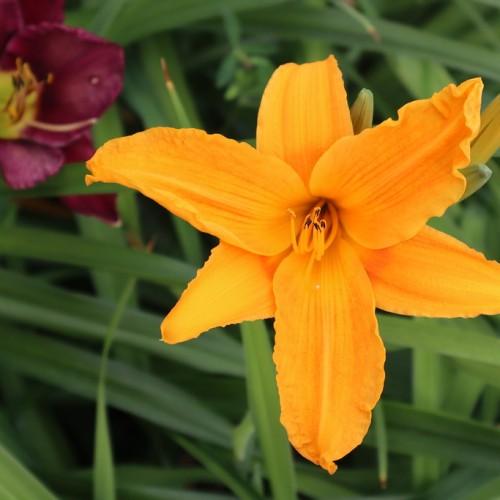
daylily
Hemerocallis 'Secret Garden'
Cycle:
Herbaceous Perennial
Watering:
Average
Hardiness Zone:
3 - 9
Flowers:
Flowers
Sun:
Full sun,part shade
Leaf:
Yes
Growth Rate:
Low
Maintenance:
Low
Drought Tolerant:
Yes
Salt Tolerant:
Yes
Care Level:
Medium
watering
Daylilies require an average amount of water, usually about 1 inch per week for optimal health. It is important to water them at the right time and the right amount. During hot weather, the plant may require more frequent watering in order to remain healthy. One way to tell if a daylily needs watering is to feel the soil around the plant. If the top of the soil is dry, then it’s time to water. The best time of day to water Daylilies is in the early morning, before the sun is up. This gives the soil and the plant plenty of time to absorb the water before the heat of the day. Water should be applied directly to the soil and not to the leaves of the daylily. This helps to prevent disease and keeps them looking healthy. Also be sure to adjust the amount of water given or the frequency of watering if it has been particularly hot or if there has been a lot of rain. Over watering or under watering can both be harmful to your daylily so make sure you are keeping an eye on your plant’s hydration needs.
sunlight
Daylilies, such as Hemerocallis 'Secret Garden', thrive in full sun, which means they need at least 6 hours of direct sunlight each day. Ideally, the sun should fall directly on the plant from 10 am to 4 pm for optimal growth and flowering. If the plant is placed in partial shade, it will receive less intense sun exposure and the blooms may be smaller and fewer in number. Daylilies also benefit from morning sun, as it helps awaken their buds and promotes vigorous blooms for later in the day.
pruning
Daylily (Hemerocallis 'Secret Garden') should be pruned in late winter or early spring. Use a clean pair of pruners or shears to cut off any dead flower stalks that are evident. It is best to wait until the last frost of the year has passed so as to not damage the growth of new leaves. If needed, prune back long, woody stems that are more than a few years old. This pruning helps to keep the daylily looking compact and full. It is important to refrain from pruning if the plant is reaching in an unfavorable direction or is proving difficult to manage, as this could damage the daylily's health.
